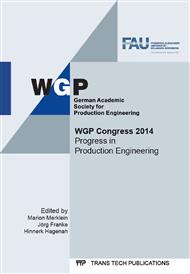p.199
p.207
p.215
p.223
p.229
p.237
p.245
p.253
p.261
Considering Anisotropic Material Behaviour of Sheet Metals for Ductile Fracture Prediction
Abstract:
In the manufacturing process of body in white components made from sheet metal it is state of the art to accompany the process by means of finite element analysis. A main criterion for determining a feasible tool design and process parameters is the prediction of material failure, which can be categorized in instability and ductile fracture. The ductile fracture failure mode is more likely to occur, as more advanced high strength steels and aluminium alloys are used for body in white components. Therefore various approaches have been presented to model ductile fracture over the past years. However, there is no guideline to determine which models are suitable for predicting ductile fracture. The same applies when it comes to choosing experiments and calibration of model parameters. A suitable model calibration is vital, as the fracture prediction depends on the determined model parameters. Usually an isotropic material behaviour is assumed for calibration of fracture models. However, sheet metals can show an anisotropic material behaviour due to the rolling process. Therefore it is arguable if an isotropic material model can be applied when fracture models are calibrated.
Info:
Periodical:
Pages:
229-236
Citation:
Online since:
September 2014
Authors:
Keywords:
Price:
Сopyright:
© 2014 Trans Tech Publications Ltd. All Rights Reserved
Share:
Citation:


